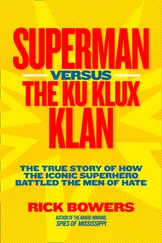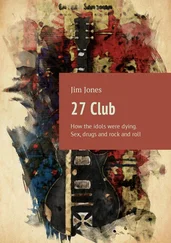The Colleen Bawn tells the story of Hardress Cregan, a young Irish squire who is smitten by the beautiful but poor Eily O’Connor, the ‘Colleen Bawn’, or fair maid (played by Agnes Robertson, Mrs Boucicault). In the face of her purity and goodness, Cregan is unable to seduce her, and agrees to marry her. His mother, meanwhile, is being wooed by the evil Squire Corrigan. When she repudiates him (‘Contemptible hound, I loathe and despise you!’), he threatens to foreclose on her mortgage. She sees a way out of her money troubles by marrying Hardress to Anne Chute, the daughter of the local landowner; Anne, however, loves Cregan’s college friend Kyrle Daly. Hardress is now regretting his marriage: Eily speaks in dialect, is poor, and has ‘low’ friends, including Myles-na-Coppaleen (played by Boucicault), once a horse dealer, but now, brought down by unrequited love for the Colleen Bawn, a smuggler and poacher. The crippled Danny Mann, Hardress’ loyal servant, tells him: ‘do by Eily as wid the glove there on yer hand … if it fits too tight, take the knife to it … Only gi’ me the word, an’ I’ll engage that the Colleen Bawn will never throuble ye any more.’ Hardress is shocked, but Mrs Cregan overhears and tells Danny that Hardress has agreed to Eily’s death. Danny takes Eily out in his boat at night, and tries to get the marriage licence from her, but she refuses. ‘Then you’ve lived too long. Take your marriage lines wid ye to the bottom of the lake.’ He tosses her overboard and rows off. Myles, who is out checking on his illegal still, shoots wildly at Danny, before dramatically leaping from the cliff to rescue Eily. In the last act, Danny thinks Eily is dead, and confesses all to Father Tom. Meanwhile, Hardress has agreed to marry Anne, but on their wedding day Corrigan, who overheard Danny’s confession, arrives to arrest him for murder. In the nick of time, Myles appears with Eily. Mrs Cregan asks forgiveness, and Hardress, transformed by this trauma, swears eternal love for the Colleen Bawn. Anne and Kyrle Daly find each other, Corrigan is thrown in the horsepond, Myles is acclaimed a hero and everyone is happy in time for the final curtain.
It is hard to know quite what made The Colleen Bawn such a smash. Partly, it was its Irishry, which made the characters foreign but not too foreign; The Times noted with approval that the rogue Myles-na-Coppaleen was a ‘plebeian Irishman of scampish propensities, who alternates native shrewdness and pathos after a fashion familiar’. Partly it was the balance of melodrama and comedy. And mostly, as with Jonathan Bradford, it was the sensational staging. The attempted drowning of Eily, with Myles’ dramatic leap, routinely stopped the show. It is not entirely clear how this was done: the lake was blue gauze, manipulated by twenty boys standing in the wings, through which the drowning Eily dropped into an open trapdoor. Boucicault’s leap from the cliff, routinely described as a ‘header’, was probably carefully aimed between the gauzes at an open trap lined with a mattress or padding, onto which he would somersault. However it was done, it was thrilling enough that the Boucicaults had to stop and take a bow each night before proceeding. *
Only infrequently had theatres been sites of subsidiary commercial activities: at performances of Jack Sheppard handcuffs for children, and bags holding ‘a few pick-locks. a screw driver, and iron lever’ were offered for sale; The Woman in White, the staging of Wilkie Collins’ 1859–60 novel, had produced Woman in White bonnets and Woman in White perfume. But it was The Colleen Bawn that developed the commercial merchandising opportunity. Sheet music had been sold in conjunction with popular shows before, but this was something else again. In 1861 alone Mr William Forde’s popular Irish airs were dedicated to Mrs Boucicault and illustrated with ‘a well-designed sketch of the most striking episode in the drama’; there were at least another dozen similar pieces, including a ‘Morceau de salon sur des mélodies Irlandaises’. Later there was the Colleen Bawn Polka, the Eily O’Connor Polka, Your Colleen Bawn, the Colleen Bawn Overture and the Colleen Bawn Quick-Step.
That was only the beginning. ‘Colleen cabs’ stood outside the theatre on the Strand, waiting to collect playgoers. Fashion adored the Colleen Bawn: by the spring of 1861 the women’s papers were filled with advertisements for ‘THE COLLEEN BAWN, the Mantle of the Season, price 3s. 6d.’; the ‘Colleen Bawn cloak’, which is ‘simple, but very pretty’; even the ‘Colleen Bawn manteau’, ‘trimmed at the bottom by five rows of narrow black velvet; the hood is ornamented by two agrafes [clasps] in silk passementerie, also black’ – not precisely what a poor Irish girl might be expected to wear. Closer to reality was the adoption by the fashionable of the Irish countrywoman’s red cloak, made from better-quality fabric and renamed the Colleen Bawn. The Colleen Bawn also permeated the leisure world. Mr Sydney Hodges exhibited his pair of paintings, the Colleen Bawn and the Colleen Ruadh (the red-headed girl). A greyhound at the Worcester Club Croome Meeting in 1861 was named the Colleen Bawn, as was a four-oared boat that raced at the Victoria Rowing Club. There was also a racehorse, but this was a three-year-old in 1861, which meant either that its name had been changed, or that it had been named for an earlier Colleen Bawn – which was not as odd as it may sound today.
For Dion Boucicault did not dream up the Colleen Bawn. The origins of Eily O’Connor are to be found in 1819, when the real Eily was drowned, with no Myles-na-Coppaleen to perform a header to save her. Eily was in reality Ellen Hanley, aged fifteen, the orphaned niece of a shoemaker (in some accounts, a rope-maker). She had somehow met John Scanlan, a retired lieutenant of the marines, and substantially above her in social status: the Scanlans probably belonged to Munster’s Catholic semi-gentry. On 29 June 1819, the couple eloped – in some accounts, they were married, in others, married by an excommunicated priest, which Scanlan (wrongly) believed would not be binding. Or Scanlan may simply have seduced Ellen, and she may have called herself ‘Mrs Scanlan’ in hope rather than fact. In any case, she stole her uncle’s savings and ran off. A few days later, Ellen Walsh, a local woman, took passage in a boat crossing the Shannon near Kilrush, with Scanlan, his boatman/servant Steven Sullivan and a woman who called herself Mrs Scanlan. They all stayed overnight at Mrs Walsh’s, where Mrs Scanlan showed off her fine new clothes. The next day Ellen Walsh saw Sullivan pull a ring off Mrs Scanlan’s finger, and the day after she noticed the trunk in which Mrs Scanlan’s new clothes had been packed sitting in Sullivan’s lodgings. Scanlan told her that Mrs Scanlan had run away with a ship’s captain, and she later overheard the two men arguing, with Sullivan saying, ‘Mr. John, I have as good a right to the money as you have.’
On 6 September, a body washed up on shore; it had been in the water for weeks, and was badly decomposed, with no hair or flesh on the skull, and with a broken arm and leg. Ellen Walsh, before she saw the body, described the missing Ellen Hanley, her clothes, and the fact that she had a curious pair of double eye teeth. She was shown the stays that had been found on the body (the remainder of the clothes had probably been lost during its prolonged immersion), and thought they resembled Ellen Hanley’s, but could not say more. All the teeth in the head had been knocked out, whether before or after death was not known, but on examination it was found that there were double sockets where the eye teeth would have been. Another woman came forward with clothes that matched Ellen Walsh’s description, which she had purchased from Sullivan. Sullivan ran away before an arrest could be made, and Scanlan was charged with murder.
Читать дальше












